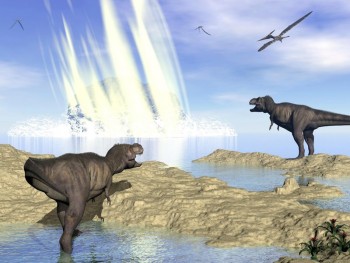We Finally Know How Much The Dino-Killing Asteroid Reshaped the Earth
March 7, 2016

More than 65 million years ago, a six-mile wide asteroid smashed into Mexico’s Yucatán peninsula, triggering earthquakes, tsunamis and an explosion of debris that blanketed the Earth in layers of dust and sediment.
Now analysis of commercial oil drilling data—denied to the academic community until recently—offers the first detailed look at how the Chicxulub impact reshaped the Gulf of Mexico. Figuring out what happened after these types of impacts gives researchers a better idea of how they redistribute geological material around the world. It also gives scientists an idea of what to expect if another such impact were to occur now.
The Chicxulub impact, which wiped out large dinosaurs and giant marine reptiles, created a global layer of debris that is now part of the geologic record. Geologists refer to this layer as the Cretaceous–Paleogene boundary, because it marks the switch between these two geologic time periods.
“It is truly a tree ring for the Earth, because how we define time geologically is by extinction events,” says Sean Gulick of the University of Texas Institute for Geophysics in Austin. “Everywhere on Earth this layer marks exactly the time when the mass extinction happened.”
Smithsonian.com, Feb.25, 2016
CNN, March 4, 2016
Huffington Post, March 7, 2016
Christian Science Monitor, March 6, 2016
Featuring: Sean Gulick, Research Professor, Institute for Geophysics, Jackson School of Geosciences
Jason Sanford, alumnus, Jackson School of Geosciences
